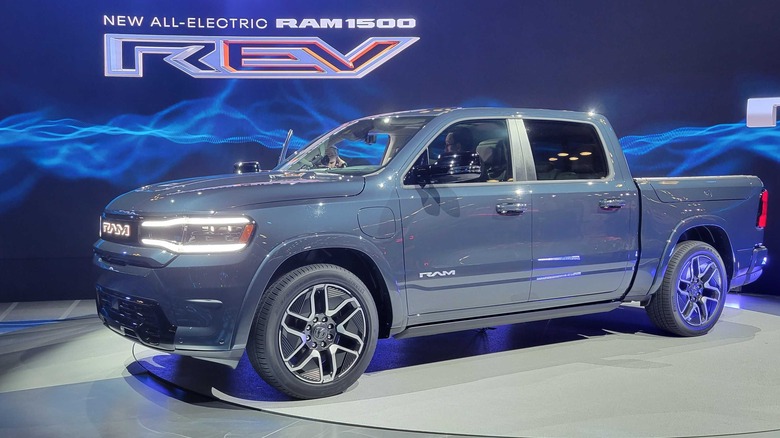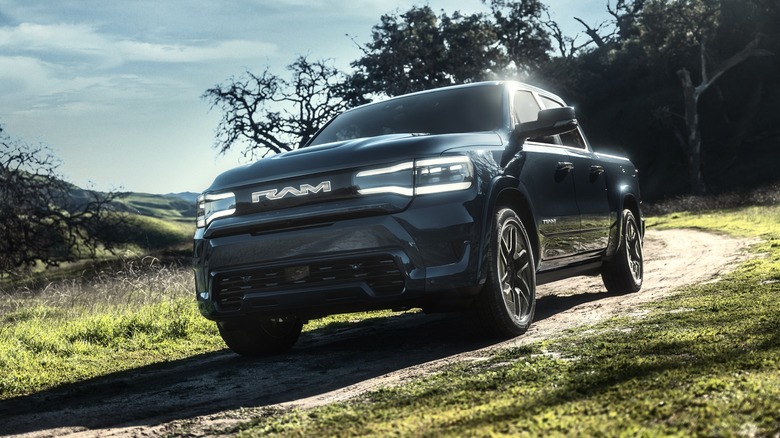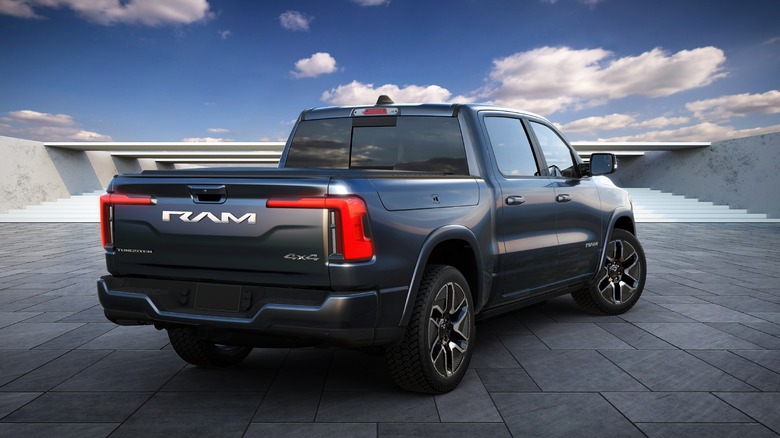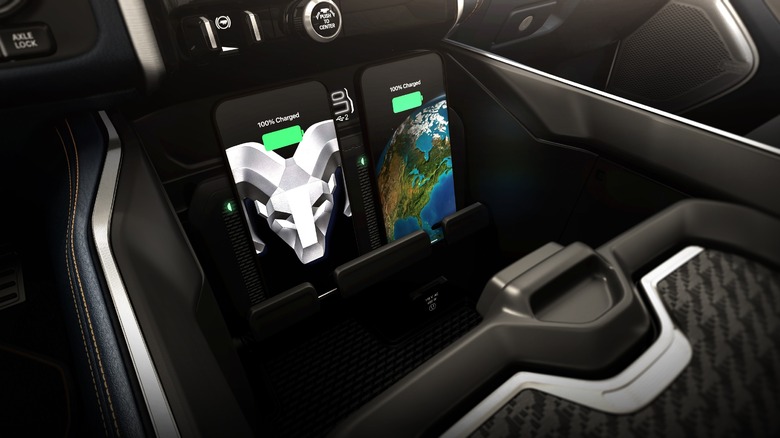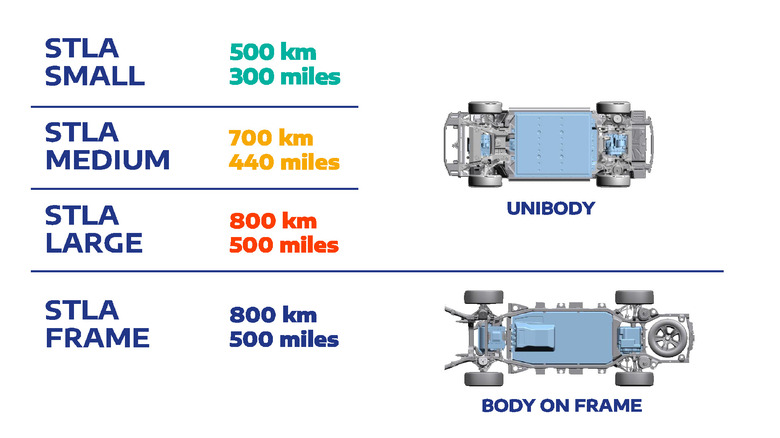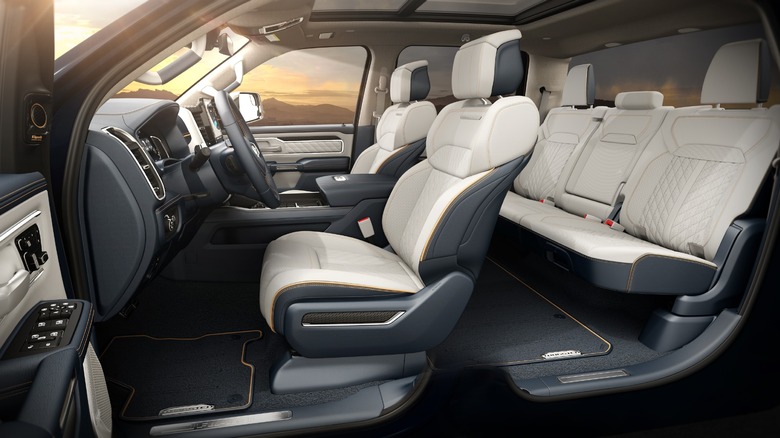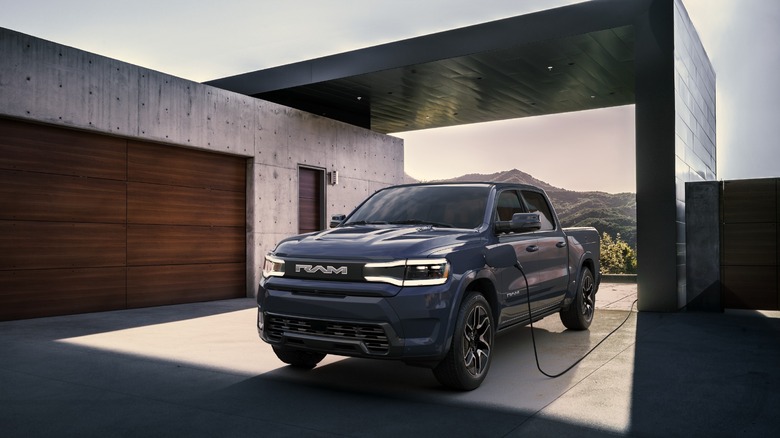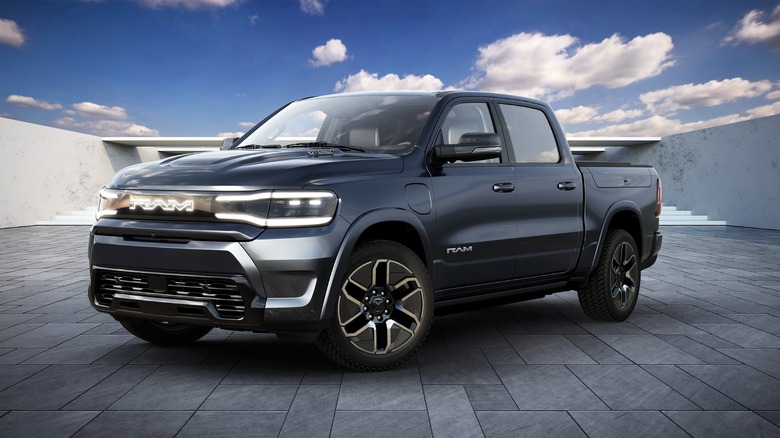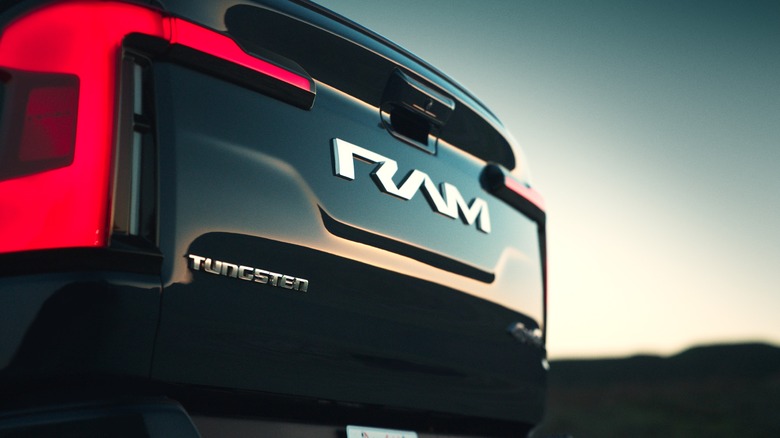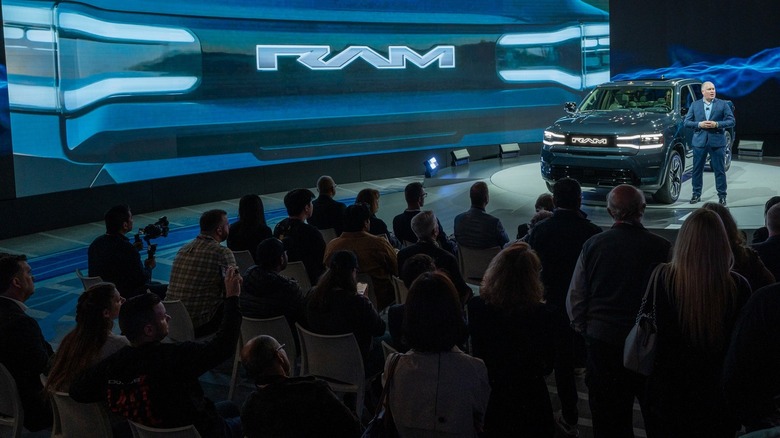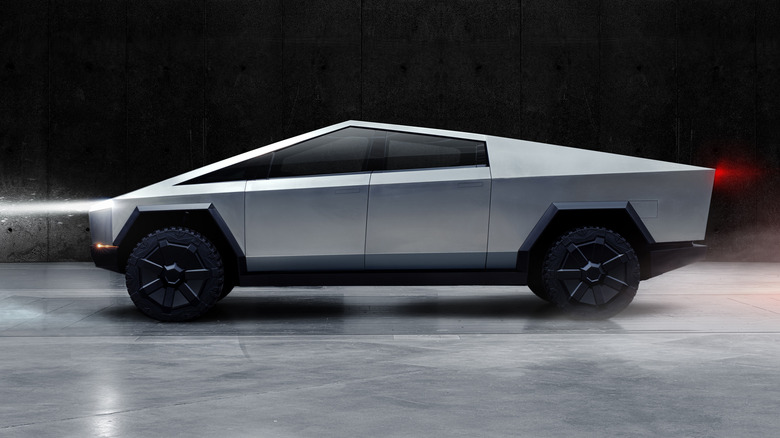The Ram 1500 REV Is A Game-Changing Electric Pickup But Time May Be The Enemy
The unveiling of the 2025 Ram 1500 REV was arguably the standout moment of this year's New York International Auto Show. We've known what Dodge has been planning around its electric truck for a while, but now we have most of the raw specs that allow us to compare it with its current and future competitors. Given the delays and setbacks the industry has suffered in recent years, it's also reassuring to actually see the physical truck sitting there instead of a concept, render, or sketch.
However, despite the new details, the release is still over a year away and we don't quite have all of the facts yet. Pricing is yet to be revealed, and will only be announced closer to launch. An exact on-sale date isn't nailed down, though the 2025-model truck is almost certainly being shipped in the second half of next year. And while the list is always expanding, we don't yet have a full range of the truck's features. SlashGear caught up with Brant Combs, Stellantis' head of RAM 1500 Product Marketing, to discuss some of the thinking behind the new truck, expand on some of the details we have, and find out how existing pickup buyers can be a tough audience to convince.
Customers shaped the new Ram's design process
To certain sections of society, EVs are a hard sell. Harley Davidson has discovered this with its LiveWire range of motorcycles — which has been relatively poorly received despite the impressive spec sheet. In a bid to make things easier for themselves, Dodge has put its customers at the heart of its new EV's design process.
"We spent over a year on what we call the "Ram Revolution," Combs said, and in particular the "The Ram Real Talk Tour" Dodge embarked on. The tour involved heading to different areas of the company and having in-depth discussions with current Ram owners from a wide range of backgrounds. "We talked to people in heavy duty and light duty, it wasn't a very specific segment we talked to everybody," Combs explained. "And we got a wide range of feedback. They didn't want to change what they were doing because the truck changed."
Dodge took a lot from the tour, but wherever they went one thing was clear: Ram owners don't like change. Luckily, despite what some automakers might have you believe, you can create an EV that doesn't alter too much about how a truck functions, and actually adds to its capabilities. "It needed to do the things that their trucks do today, and that is range, payload, towing, and charge time. It's not changing their daily lives, it's about making it better," Dodge's head of Ram 1500 product marketing said. "We're getting rid of the compromise: we're giving them something that their truck can do now and even more."
The specs are something else
Though full details of the Dodge Ram 1500 REV won't arrive for a while yet, what we do know suggests that this truck is unlike anything we've ever seen before. The first thing that stands out is the vehicle's range. Don't think in terms of trucks or other large vehicles: the capability to do 500 miles on a single charge means this is going to be one of the longest-range EVs on the market, perdiod. In terms of battery capacity, the standard truck carries a 168 kilowatt-hours pack, while the extended range version holds a whopping 229 kilowatt-hours.
As a result, an unladen Ram 1500 REV XR could be capable of going close to 100 miles further than the longest-ranging Tesla, and is only really beaten by ultra-high-end luxury sedans like the Lucid Air Grand Touring. Even the standard truck, with its 350 mile range estimate, goes beyond class-leading and beats the majority of electric vehicles quite comfortably. Plug in at a DC fast charger, meanwhile, and — though we still aren't quite at gas station refueling levels yet — you're looking at around 110 miles of range added in approximately 10 minutes.
Performance goes beyond range, and the Ram is a very capable truck. It can tow an eye-watering 14,000 pounds, and has a payload of 2,700 pounds. If it is released with the planned specs, expect a 0-60 mph time of 4.4 seconds, 654 horsepower, and 620 lb-ft. of torque.
The staggering range is about more than pure distance
While the raw specs are impressive, and the industry-leading range is a standout feature, the truck itself is all about practicality. People aren't likely to be taking on regular road trips in their unladen Rams, but the range is there to serve a different purpose.
"The larger that range number is, the further they're able to go when they are loaded," Combs explains, "They are using that payload and they are using that towing capacity. They need that unladen number to be bigger, so they can do more when they are using it."
While you may see 350 miles of range on a spec sheet, give that Ram a full payload and that will drop significantly. Going overkill on the range ensures that an owner stands a good chance of using their truck practically, without having to worry about running out of juice halfway through a work day or — worse still — out in the middle of nowhere. Again, this seems to feed into the core principle Dodge has with the Ram 1500 REV: its customers can still do everything they're already, doing without any added inconvenience.
Ram's EV marks the full STLA frame's debut
There's more than one way to make an electric vehicle, and some of the limitations we currently see in the category are due to how companies choose to put things together. Some manufacturers save time, money, and effort by adapting a vehicle they currently manufacture, so it becomes all-electric. While that can be faster, the end result — essentially cramming a bunch of batteries, motors, and other parts into a frame that wasn't designed to accommodate them — can be compromised.
Ideally, you want a frame designed specifically for EVs. This is what Dodge's parent company, Stellantis, is doing with its STLA frames, and the Ram 1500 REV will mark the first time we see a vehicle on the full-sized STLA frame. It's part of the reason, Combs says, that the truck can be crammed with so many battery cells.
Despite the brand new architecture, though, what you see in the parking lot is very recognizable. "It's got a familiar design, you know it's a Ram," Combs says. "We took some great design elements from our concept vehicle, LED headlights, along with a sleek updated front facia that's very 'electric truck'."
The frame itself is constructed from "lightweight yet stiff and durable" advanced materials that accommodate the battery pack without hampering the vehicle's safety and performance. It also features a full "aero belly pan," which helps shield the battery pack and helps the vehicle achieve an impressive .340 drag coefficient.
The interior is also getting a major upgrade
Inside, meanwhile, promises to be Dodge's most technologically-advanced Ram 1500. While the basic Tradesman trim is still available for minimalists, those looking to save some cash, and the technologically averse, Dodge's range spirals up through both luxury and gadget-filled variants. There'll be a Limited trim, as in the gas-powered pickup, with the usual mix of real wood and metal, but the EV introduces another option.
The new Tungsten trim goes beyond Limited and offers materials like suede, leather, and aluminum. The leather is quilted, the seats offer greater lumbar support, and they also have a massage setting so you can be comfortable on those 500 mile long trips. The biggest feature, though, is arguably the ultra-premium Klipsch Reference Premiere audio system, which spaces 23 high-end speakers around the truck and may be a game changer for audiophiles.
Then there are the displays. "There's a lot going on, that's a lot of tech in front of the front seats," Combs says, describing the 14.5" central touchscreen and 10-inch passenger screen. They're the gateway to Dodge's upgraded Uconnect system, used to access maps and navigation, link a phone, and manage the EV itself. That includes monitoring battery life and configuring charging settings, like capping charging at 80% to preserve the battery's long-term health.
Doing more than the average truck
Dodge may have focused heavily on ensuring its electric Ram could do everything current trucks can, but it didn't stop there. A good example of going above-and-beyond gas pickups are the "power panels" positioned throughout the EV – in the front of the truck, the truck's bed, and inside the "Ram box" – which allow owners to access the tremendous amount of power stored in the Ram's batteries for other purposes.
It should also be capable off-road. From an offroad capability perspective, EVs have a lot of positives," Ram's Combs says, pointing to the optional all-terrain tires and rear e-locker. There's active-level four-corner air suspension with adaptive damping, and the frunk offers around 15 cubic feet of space, besting the F-150 Lightning's person-swallowing 14.1 cu-ft. Couple this with the towing capacity, the large battery, and the confirmed vehicle-to-vehicle charging capability, and you have a truck that is perfectly suited to rescue stranded EVs.
Those rescue capabilities aren't limited to other electric vehicles, either. Like the Ford F-150 Lightning, with its 91 kWh or 131 kWh batteries, the Ram could power your house. Details are scarce — beyond "it will be able to do this" — but, given the larger capacity battery, the Ram should be able to keep a house going longer than Ford's electric pickup. If it's anything like the system Ford uses, getting your house set up so it can run off a truck will likely be expensive, but the feature could be invaluable in rural areas that are prone to power outages.
This truck's price may be as wild as its specs
Pricing hasn't been announced for the Ram 1500 REV, but prospective buyers should brace themselves. There is no universe in which this vehicle is going to be "cheap." Rams aren't cheap trucks to begin with, and exist on the higher end of the market — especially when you get into the luxury trims. Add in the enormous (and expensive) battery pack, and you're probably looking at a class-leading price tag to match the class-leading range.
Combs wasn't giving much away with regards to pricing, though Ram is clearly counting on a broad line-up to help ease the pain where possible. "Price is a purchase consideration for sure," the marketing chief said, "and that's why we'll continue to offer that range of trims. The power of choice is gonna be a big thing for us, as we add to the lineup. We want to continue to give people the options they're expecting from us."
On the one hand, this is a class-leading vehicle, and there's certainly an audience who'll likely pay the — expensive — price for it. GMC's six-figure Hummer EV is evidence of that. At the same time, though, Dodge is clearly making a statement with this truck: comparing it to the wildly-successful F-150 Lightning, and promising to demolish it in every department. Ford has arguably made that like-for-like comparison a little easier on Ram, with the F-150 Lightning no longer the $40k EV it launched at.
You also have to consider the Tesla Cybertruck, if it ever actually arrives. In terms of specs, it is one vehicle that could potentially go head-to-head with the Ram. In terms of pricing, things are currently up in the air. Musk has long promoted the distinctive pickup as something that could be reasonably priced, with the entry-level version initially pegged at under $40,000, but production needs to kick off before it can be considered a genuine alternative.
Despite the huge battery, weight somehow isn't an issue
You can only do so much with battery technology, today. If you want "class-shattering range," the only practical ways to achieve that are to build a lighter EV, or cram more battery cells into it. Dodge opted for the latter route, with Stellantis' new STLA frame designed around accommodating that huge battery bank.
Batteries also weigh a lot, and weight has its own issues. It affects handling, it can affect balance depending on how its distributed, and if something goes wrong, rescuing a vehicle gets more complex as that vehicle's mass increases. Still, the Ram 1500 REV isn't as heavy as you might think. According to Combs, the standard version tips the scales at around 7,500 pounds — which is a lot, but not outlandish for a truck. There are regular gas and diesel-powered trucks that weigh around that much.
Ram's EV may not win everyone over
Dodge certainly went all out to make the Ram 1500 REV as close as possible to what its customers claim they want. Nonetheless, there's still a portion of the company's fanbase that probably doesn't want to go electric. Some sections of the pickup-driving community are openly antagonistic toward anything resembling a "green" option. After all, it's that audience which spawned the concept of "rolling coal," where diesel trucks are modified in a way that makes them billow out as much black smoke as possible. Though an extreme example, and one which doesn't represent the majority of truck owners, it still shows that there's an almost pathological opposition to EVs in some quarters.
Harley Davidson had to quietly scale back production numbers of its electric motorcycle earlier this year, after orders were lower than the company initially expected. Again, this is an area where the customer base expects and enjoys certain things. They want the smell of gasoline and exhaust fumes, they want the noise, and they aren't necessarily prepared to trade that in for better acceleration, instantly accessible torque, or some fuel savings.
There's even a Dodge-related example from recent times. The company is already receiving heat for its decision to kill off the gas-powered Charger and Challenger. The decision to add an electric "exhaust" to the Daytona SRT concept that was unveiled last year, meanwhile, was met with derision. For all your specs might be stellar, the reality is that you can't please everyone.
This is a fast-moving market
The F-150 Lightning is arguably the best electric truck on the market. Ford got to the mass market first and promptly sold out, with further orders being suspended as demand outstripped production capacity. On paper, though, the Ram 1500 REV beats the F-150 Lightning in pretty much every department, in no small part because EV technology moves fast, and Dodge has had a couple of extra years to develop its flagship electric pickup.
As things stand today, the Ram 1500 REV is poised to become the king of electric pickups — once, that is, orders begin getting filled. A lot can change in a couple of years, and there's stiff competition on the horizon. Most obvious is Tesla's long-awaited Cybertruck which, at the high end, promises to match the Ram 1500 REV in range and towing capacity, while beating it on acceleration. The Cybertruck is set to finally enter production this year, but — given the numerous delays — a further setback wouldn't be shocking.
Then there's the electric version of Chevrolet's Silverado. The Silverado EV has more horsepower and torque than the Ram, though less towing capacity, but Chevy's truck should debut this year and may beat the Ram to market. Ford, meanwhile, is undoubtedly working on its F-150 Lightning update.
While what we know so far gives us plenty to get excited about, there's still a long wait to see Ram 1500 REVs on the road. Reservations are open, but pre-ordering won't start until later this year, and deliveries from Q4 2024. Between now and then, expect more details to emerge, the current details to be confirmed and refined, and plenty of hype-building stunts from Dodge as it attempts to keep the momentum going.
